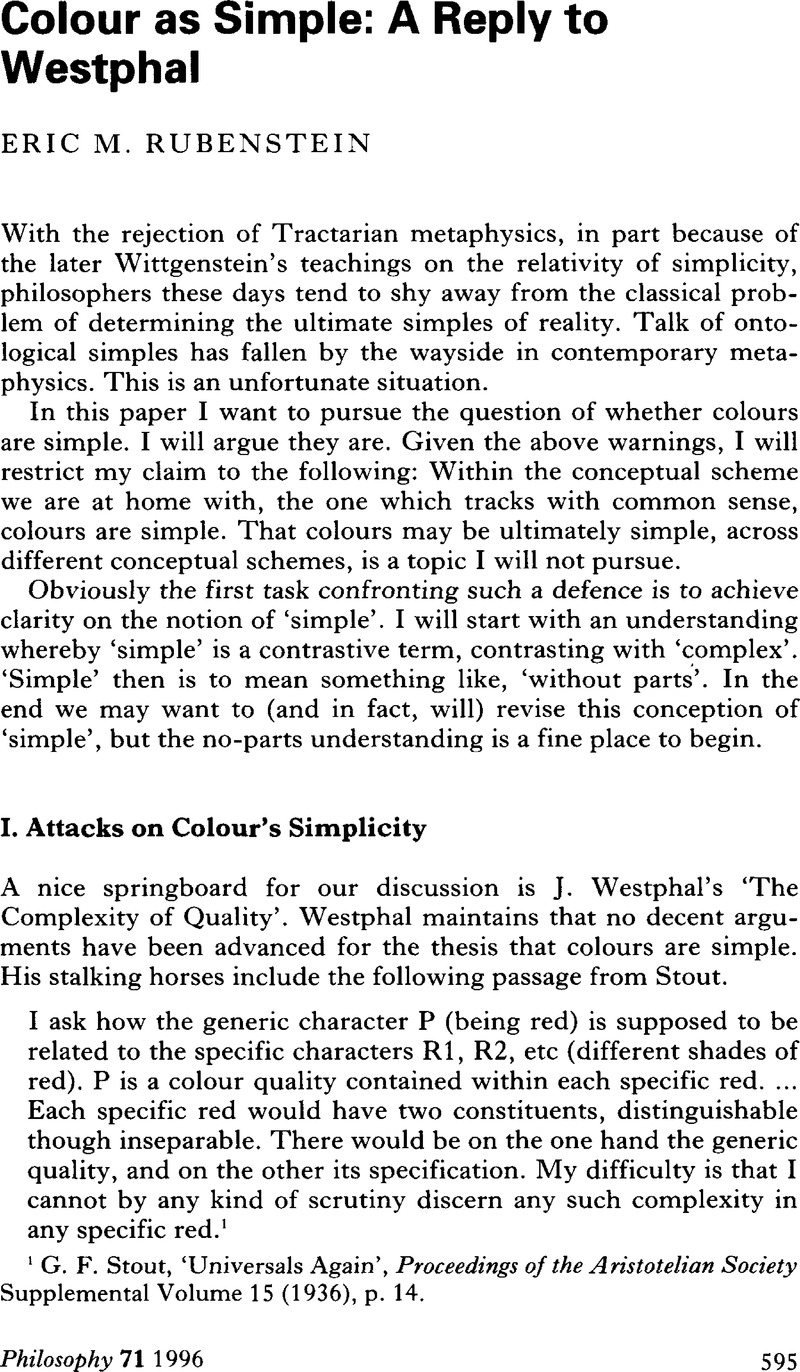No CrossRef data available.
Article contents
Colour as Simple: A Reply to Westphal
Published online by Cambridge University Press: 30 January 2009
Abstract

- Type
- Discussion
- Information
- Copyright
- Copyright © The Royal Institute of Philosophy 1996
References
1 Stout, G. F., ‘Universals Again’, Proceedings of the Aristotelian Society Supplemental Volume 15 (1936), p. 14.Google Scholar
2 Pears, D., ‘Incompatibility of Colours’ in Flew, A. (ed.) Logic and Language (Second Series) (Oxford: Basil Blackwell Press, 1973), p. 119.Google Scholar
3 Westphal, J., ‘The Complexity of Quality’, Philosophy 59 (1984), p. 458.Google Scholar
4 Westphal, p. 466.
5 Even being able to speak of differences and similarities across distinct colour-patches, as we shall see, does not invalidate the claim that those colours are simple.
6 Likewise in Wittgenstein's duck-rabbit example. We should not conclude the figure to have both a duck and a rabbit as its components. Rather, the alleged complexity turns on two different acts of seeing-as.
7 For more on this theme, see Prior, A., ‘Determinables, Determinates,and Determinants’ Mind, 58 (1949).Google Scholar
8 Prior, p. 6.
9 Westphal, p. 457.
10 I wish to thank Brad Cohen and Andrew Mills for helpful suggestions and comments.




